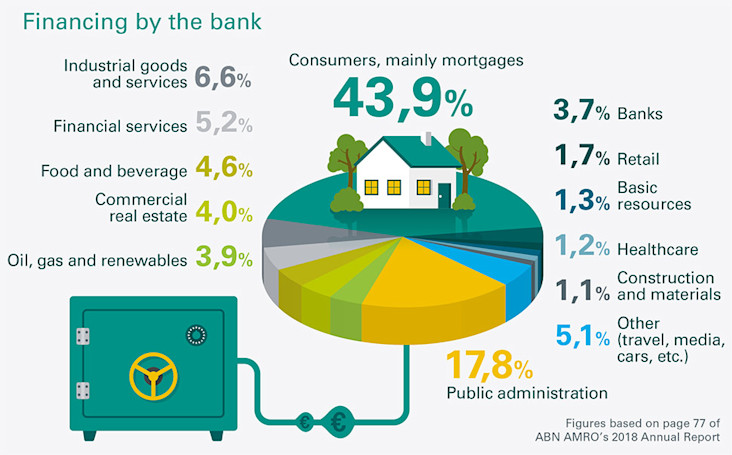Where does your money go?

- Sustainable banking newsletter
The bank’s operations are basically divided into two categories: managing savings and providing funds to parties who need it. But where does the €400 billion on ABN AMRO’s balance sheet actually go? Which sectors are the main recipients of the bank’s financing activities? The food sector? The construction industry? Fossil fuels? Actually, none of those. The lion’s share of that €400 billion goes towards financing mortgages for private individuals.
Mortgages and loans
Over two-thirds of the bank’s total assets, more than €275 billion*, is how much the bank lends to clients. Mortgages make up the vast majority (93 per cent) of the €160 billion earmarked for consumers. Most of the remaining €115 billion is used to provide financing to companies and businesses. Roughly half of those outstanding loans are taken out by large companies (i.e. with a turnover exceeding €250 million). The other half goes to SMEs. In its annual report, ABN AMRO gives a breakdown of the most important sectors.

Buffers
So what happens to all the money that the bank doesn’t lend in the form of mortgages or business and corporate financing? Banks have to maintain buffers to ensure sufficient liquidity at all times, even in extreme circumstances (also known as stress scenarios). ABN AMRO invests part of that money in government bonds and entrusts a portion of its buffers to the European central bank (around €29 billion at the end of September 2019). Banks now pay negative interest rate on this amount.
This liquidity means banks can help ensure that organisations can always meet their obligations and help guarantee financial stability so that clients can still use their debit cards, withdraw cash or transfer funds no matter what.
*Figures based on page 67 of ABN AMRO's 2018 Annual Report.